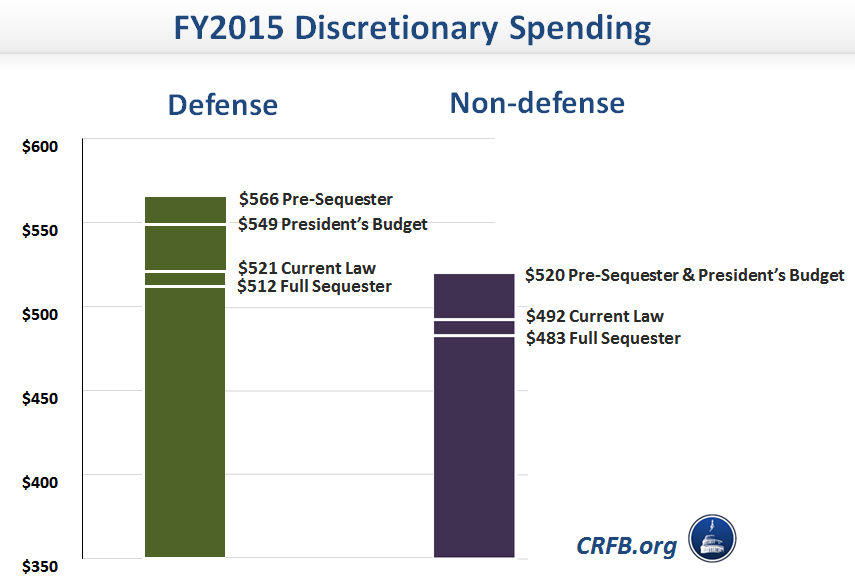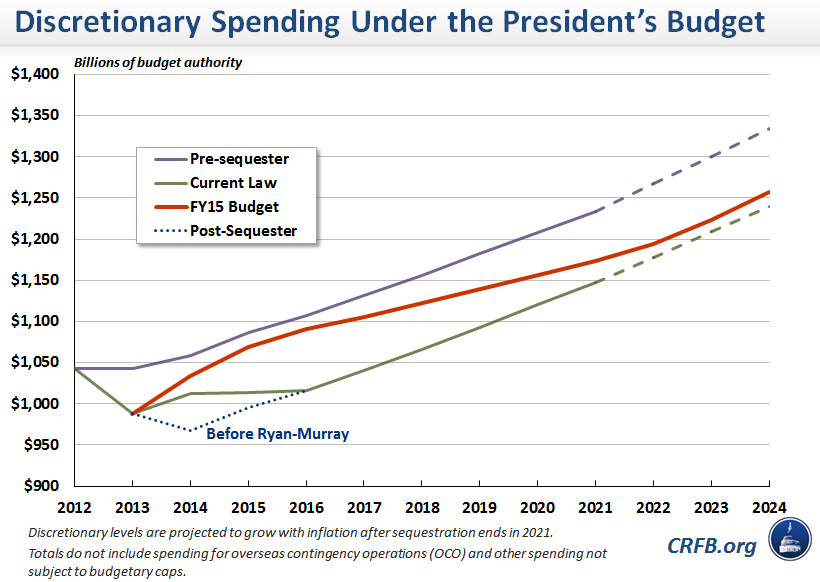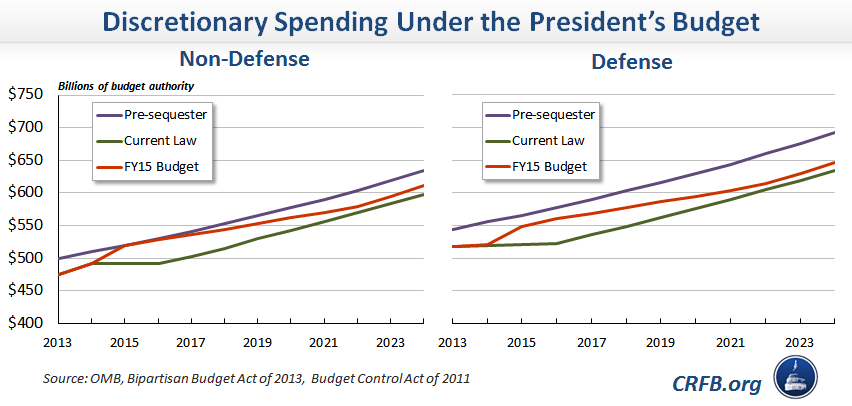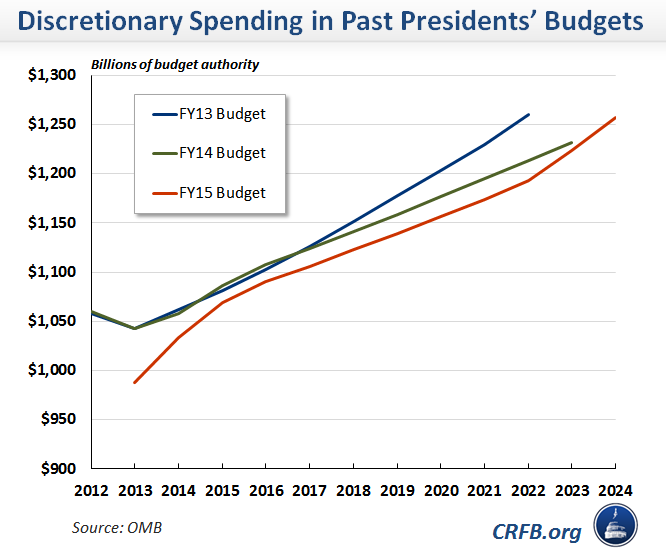How the President's Budget Deals with the Sequester
On Tuesday, the President released his budget, detailing his priorities for the upcoming year and beyond. Facing declining federal investment, the President's new budget places an emphasis on restoring some of the sequester cuts to discretionary and mandatory spending passed in the Budget Control Act of 2011. In December, the budget agreement between Budget Committee Chairmen Paul Ryan and Patty Murray set discretionary spending levels for the next two years (FY2014 and FY2015) somewhat above sequestration levels, but left the lower sequester levels in place from 2016-2021 and actually extended the sequester of mandatory spending through 2023 (which has subsequently been extended through 2024).
For 2015, the President details how to live within the discretionary spending caps in last year's budget agreement, but also proposes raising them by $55 billion, equally divided between defense and non-defense. This increase would bring total discretionary spending to $1.069 trillion, $17 billion less than it would have been without the sequester and $74 billion higher than if the full sequester had gone into effect.
Even though the President's $55 billion increase is equally split between defense and non-defense, it affects the sides of the budget differently. The increase is enough to boost non-defense spending up to pre-sequestration levels of $520 billion. Yet the defense side gets cut more by the sequester, since some of the non-defense cuts go to the mandatory portion of the budget. Thus, an equal sized boost to the defense budget still falls $17 billion short of pre-sequestration levels.
And although the President's budget initially approaches pre-sequester levels, discretionary spending would increase at rates slower than inflation, bringing it close to sequester levels by the end of the decade. In total, the President's budget proposes spending over $400 billion more than sequestration levels on discretionary programs over the coming 10 years, or around $475 billion less than without the sequester. The budget would also completely repeal the sequester's cuts to mandatory spending, largely focused on Medicare providers and plans, and offset these restorations with spending cuts and revenue increases elsewhere in the budget.
Again, as for 2015, the effects on defense and non-defense discretionary funding would be different.
As a result of new laws and proposals, the President has revised his budget's discretionary spending downward over the last several years. The $1.069 trillion requested for 2015 is $12 billion less than the President had requested for the same year two years ago. By 2022, this year's budget request is $87 billion lower than his 2013 request.






